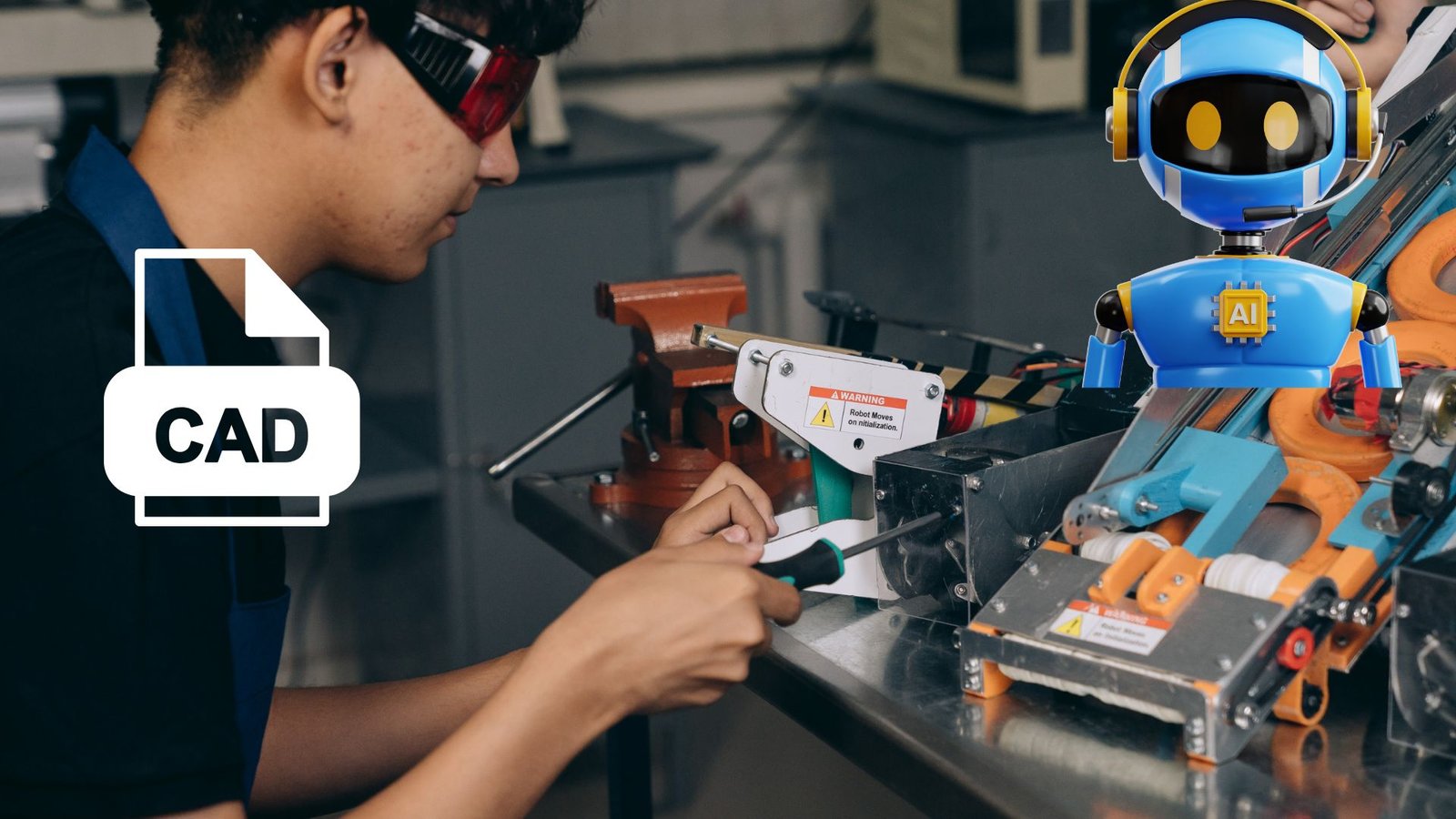Artificial Intelligence in CAD: Transforming Design Processes
Artificial intelligence (AI) is reshaping industries, and computer-aided design (CAD) is experiencing a significant transformation. CAD, a vital tool for architects, engineers, and product designers, is being enhanced by AI to deliver greater efficiency, creativity, and precision. Research suggests AI in CAD can streamline workflows, reduce costs, and foster innovation (Autodesk). This article explores how AI is revolutionizing CAD, its benefits, applications, future trends, and challenges, with a focus on generative AI consultancy.

Understanding CAD and AI Integration
Computer-Aided Design (CAD) uses software to create, modify, analyze, or optimize 2D and 3D designs, widely used in architecture, engineering, and manufacturing. AI in CAD involves intelligent algorithms that automate tasks, predict outcomes, and optimize designs. For instance, AI can analyze data to suggest improvements, making the design process smarter. This integration is transforming traditional CAD into a more dynamic and efficient toolset.
Moreover, AI introduces capabilities like machine learning and generative design, which allow CAD systems to learn from data and generate multiple design options. This synergy enhances productivity and opens new possibilities for innovation, aligning with the growing demand for advanced design solutions.
How AI is Revolutionizing CAD
AI is transforming CAD by introducing intelligent features that enhance every stage of the design process.
Automated Design Processes
AI automates repetitive tasks like drawing creation and error detection. Tools like Autodesk Fusion use AI-driven features such as Sketch AutoConstrain and Automated Drawings to streamline workflows (Autodesk). This reduces manual effort, allowing designers to focus on creative tasks and improving overall efficiency.
Generative Design in CAD
Generative design, powered by AI, is a game-changer. Designers input parameters, and AI generates multiple optimized design options. For example, Autodesk Fusion 360 creates designs that balance strength and material efficiency, ideal for industries like aerospace (Autodesk). This approach accelerates innovation and supports sustainable design practices.
Predictive Modeling and Simulations
AI enhances CAD with predictive modeling and advanced simulations. By analyzing datasets, AI predicts design performance under various conditions, reducing the need for physical prototypes. ANSYS reports that AI-powered simulations can speed up processes by 100X, saving time and costs (ANSYS).
Enhanced Collaboration
AI facilitates real-time collaboration by providing instant feedback and clash detection. It integrates with platforms like 3DExperience, where tools like 3D Creator automate tasks and improve over time, fostering seamless teamwork (SolidWorks).
Benefits of AI in CAD
The integration of AI into CAD offers significant advantages:
- Increased Productivity: Automation reduces design time, boosting efficiency.
- Cost Savings and Sustainability: AI optimizes material use, lowering costs and supporting eco-friendly designs.
- Enhanced Innovation: AI-driven insights lead to more accurate and creative solutions.
For instance, generative design can reduce material waste by up to 20%, aligning with sustainability goals (Cadasio).
Real-World Applications of AI in CAD
AI in CAD is making an impact across various sectors:
Architecture
AI helps architects create complex structures optimized for aesthetics and structural integrity. Tools like Autodesk Fusion enable rapid exploration of design alternatives, enhancing project outcomes.
Engineering
In automotive and aerospace, AI designs lightweight, durable components. For example, generative design in CAD has been used to create parts that reduce vehicle weight by 15%, improving fuel efficiency (Autodesk).
Manufacturing
AI streamlines manufacturing by optimizing designs for production. Tools like 3D Sheet Metal Creator automate tasks, reducing production time and costs (SolidWorks).
Robotics and Automation
AI-powered CAD designs complex robotic systems, optimizing movement paths and simulating real-world behavior, advancing industrial automation (Cadasio).
Future Trends in AI and CAD
The future of AI in CAD is promising, with several trends emerging:
Integration with 3D Printing
AI optimizes designs for additive manufacturing, making 3D printing more efficient. This reduces production time and material waste, enhancing manufacturing processes (ScienceDirect).
Extended Reality (XR)
Combining AI with XR creates immersive design environments, improving visualization and interaction. This allows designers to test designs in virtual 3D spaces, enhancing analysis (ScienceDirect).
Personalized Design Assistance
AI will adapt to individual designer styles, offering tailored recommendations. Apollo Technical suggests this personalization will enhance design efficiency and creativity (Apollo Technical).
Generative AI Consultancy
Generative AI consultancy is gaining traction, helping businesses implement AI-driven CAD solutions. Experts guide companies in leveraging tools like generative design to optimize workflows and achieve competitive advantages.
Challenges and Considerations
Despite its benefits, AI in CAD faces challenges:
Data Privacy and Security
AI relies on large datasets, raising concerns about data security. Browser-based solutions like Onshape mitigate risks, but robust frameworks are needed (Onshape).
Training and Skill Development
Designers require training to use AI-integrated CAD tools effectively. Upskilling programs are essential to bridge the skills gap and maximize AI’s potential.
Ethical Issues
Ethical concerns, such as copyright and design similarity, arise with AI-generated designs. Developing clear guidelines is crucial to ensure responsible AI use (Cadasio).
Conclusion
Artificial intelligence in CAD is transforming design processes, offering unparalleled efficiency, innovation, and sustainability. From generative design to predictive modeling, AI enhances every aspect of CAD, benefiting industries like architecture, engineering, and manufacturing. While challenges like data privacy and training needs persist, the future of AI in CAD is bright, with advancements in 3D printing, XR, and generative AI consultancy paving the way. By addressing these challenges, professionals can fully harness AI’s potential to shape the future of design.
Recommended Visuals:
- Infographic: Evolution of AI in CAD (Alt text: “Infographic showing the timeline and impact of AI integration in CAD”)
- Chart: Benefits of AI in CAD (Alt text: “Chart highlighting productivity, cost savings, and innovation from AI in CAD”)
Key Statistics:
| Aspect | Impact | Source |
|---|---|---|
| Productivity | Reduces design time by automating tasks | Autodesk |
| Sustainability | Up to 20% material waste reduction | Cadasio |
| Simulation Speed | 100X faster with AI-powered simulations | ANSYS |
| Engineering Efficiency | 15% weight reduction in automotive parts | Autodesk |



















Post Comment